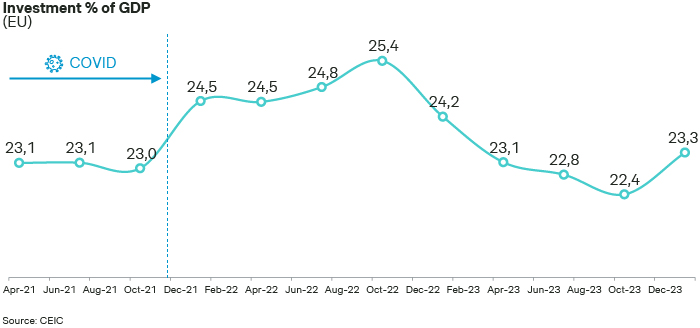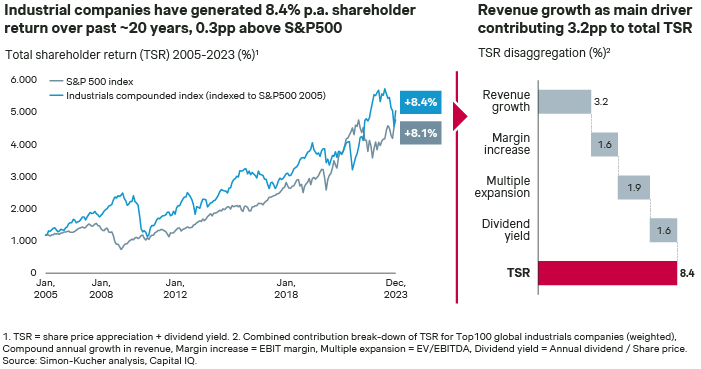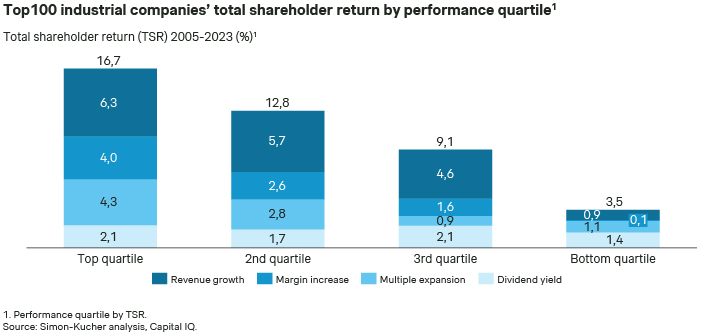The prevailing macroeconomic landscape has cast a shadow over the topline growth ambitions of countless companies worldwide. The ominous signs that surfaced in 2022 reached full fruition in 2023, as elevated interest rates, economic unpredictability, and geopolitical turmoil infiltrated boardrooms globally. Moreover, ongoing megatrends like digitalization and sustainability further complicate the imperative to navigate a swiftly evolving landscape.

It should come as no surprise that the current, complicated business environment has resulted in tangible repercussions. These include diminished capital investments, reduced industrial output, reduced consumer expenditure, and a widespread erosion of financial performance among publicly traded companies. In response to mounting pressure from stakeholders and looming signs of recovery, senior executives are increasingly compelled to revitalize and prioritize their organizations’ growth ambitions.
Why is growth so important?
Now that the initial wave of disruption has subsided and subtle signals of gradual recovery in the second half of 2024 surface, it becomes apparent why companies are once again directing their attention towards growth. A thorough analysis of the financial performance of industrial companies over the past two decades underscores the pivotal role of topline growth in optimizing total shareholder return (TSR), a fact that has not gone unnoticed within boardrooms globally.

Yet, reigniting growth and attaining above-market performance remains an accomplishment reserved for the elite companies. Adding to the challenge, many companies’ growth strategies were crafted prior to 2023, potentially rendering them ill-suited for today’s dynamic landscape and evolving trends.
How to reignite growth
This raises a fundamental question: How can firms efficiently reassess their growth strategies to reignite momentum?
When delving into companies that have successfully reignited growth during challenging periods, we consistently observed several key factors that provide valuable insights for a broader spectrum of industrial companies. These critical success factors can be summarized as follows:
- Offering innovation: Maintaining a healthy pipeline of innovation throughout economic cyclicality not only ensures the competitiveness of a company in the medium term, but is, in many instances, a table stake in driving customer demand in the short term. Within this paradigm, sustainability (among other parameters) has become an inherent component in defining the value proposition in many sectors – a prerequisite to get a seat at the table.
- Commercial model evolution: In the B2B sectors, the interface between the customer and the company is complex and multi-faceted. Best-in-class companies navigate this complexity with precision and develop propositions aligning to the evolving expectations of the customer. The delineation between software and hardware products is becoming blurry, needs between different customer segments are more pronounced, and the composition of CapEx vs. OpEx is changing. Top tier companies invest into developing the forementioned topics – keeping them ahead of the competition in terms of value capture rate.
- Investments in commercial operations: The requirements for commercial operations are heightened as digital mechanisms have become mainstream, technical capability requirements (e.g. sustainability) in solution and product sales have increased, and due to evolution in commercial models, steering and monitoring performance is changing. Companies that generate the highest shareholder return consistently invest in developing their commercial operations. This investment has a direct impact on the growth trajectory.

In conclusion, a multi-variate notion such as shareholder return cannot be simplified in a few thematic sentences. However, based on a wide sample of companies, we can draw strong correlations, even causalities, between top quartile TSR performance and meticulous attention toward developing commercial proficiency. Growth, an ambition stated by many but mastered by few, must be on the agenda of every company – delivering the returns expected by shareholders putting their trust in the hands of the management teams.
How Simon-Kucher can help
At Simon-Kucher, we are here to help industrial companies identify new avenues for revenue growth amidst these challenging market conditions. For decades, we have helped businesses of all sizes grow strongly and profitably. Whether it’s designing growth strategies, optimizing product pricing, or rebuilding sales organizations for today’s business realities, we bring a wealth of knowledge, experience, and pragmatism to every business challenge.
Explore all the insights from our B2B Masterclass
Unlock practical strategies in B2B pricing, sales, and marketing



